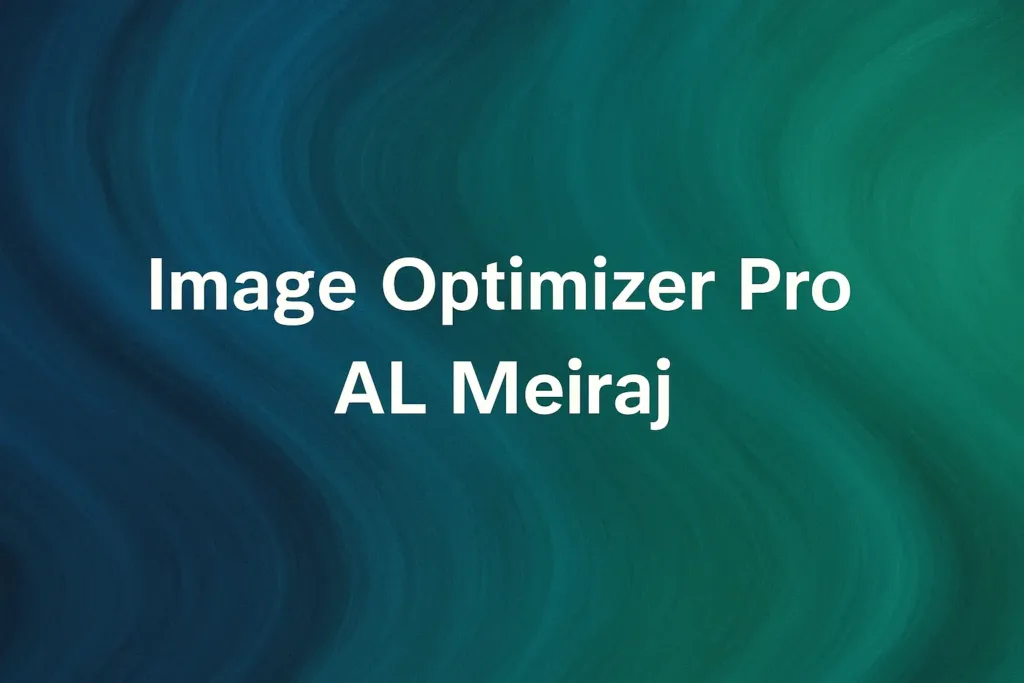Image Optimizer Pro
Smartly optimize single or multiple images with powerful, automatic compression.
Original Image
Resize & Process
Optimizing…
Optimized Images
Image Optimizer Pro: The Complete Guide to Smart Compression
In today’s fast-paced digital landscape, website performance is paramount. Large, unoptimized images are one of the biggest contributors to slow load times, which can frustrate visitors, increase bounce rates, and negatively impact your search engine rankings. Google’s Core Web Vitals, a key ranking factor, heavily penalizes slow-loading pages. The challenge is to maintain beautiful, high-quality visuals without sacrificing speed. This is where Image Optimizer Pro comes in.
Welcome to your all-in-one solution for intelligent image optimization. This tool is more than just a simple compressor; it’s a powerful utility designed to give you both automated smart compression and fine-tuned manual control. Whether you need to process a single hero image for your homepage or perform a bulk image reduce on an entire photo gallery, this guide will walk you through every feature to ensure your website is both beautiful and blazing-fast.
How to Use the Single Image Optimizer
This mode is perfect for your most important images—the ones that need individual attention. Use it for logos, banners, featured blog images, or any photo where you want to get multiple format options and have the ability to fine-tune the result.
Step 1: Upload Your Image
Getting started is simple. In the “Single Image Optimizer” tab, you can either drag and drop an image file directly into the upload area or click the box to open your computer’s file selector. The tool accepts the most common web formats: PNG, JPG, and WEBP.
Step 2: Resize and Process
Once your image is uploaded, a preview will appear on the left, and the control panel will activate on the right. Here, you can enter new pixel dimensions to resize the image. For best results, it’s always recommended to resize your image to the maximum size it will be displayed on your website. For example, if your blog’s content area is 800 pixels wide, there’s no need to upload a 4000-pixel wide image. Resizing it to 800px will drastically reduce the file size before any compression even happens. Keep the “Maintain aspect ratio” box checked to prevent your image from looking stretched or squashed.
When you’re ready, click the “Process Image” button. This is where the smart compression engine takes over.
Step 3: Fine-Tune and Download Your Optimized Images
After processing, the tool will present you with three optimized versions of your image: JPG, WEBP, and PNG. The tool automatically determines an intelligent target size based on your original image’s file size. For example, a very large 2MB photo will be compressed more aggressively than a 600KB photo, ensuring a good balance between size and quality.
For JPG and WEBP files, you have the option to take control. Click the “Adjust” button to open the fine-tuning modal. Here, you’ll see a quality slider that lets you increase or decrease the compression level in real-time. Watch the “New Size” indicator to find the perfect balance you need. This is incredibly useful if you have a strict size requirement or want to eke out a little more quality. Once you’re satisfied, click “Save Changes” and download your perfectly optimized images.
How to Bulk Optimize Images with the Bulk Image Compressor
When efficiency is key, the “Bulk Image Compressor” is your best friend. This feature is designed to save you hours of manual work. Use it to bulk optimize images for galleries, new blog posts, or entire product catalogs. It allows you to apply consistent settings across many photos at once.
Step 1: Upload Multiple Images
Navigate to the “Bulk Image Compressor” tab. You can drag and drop a folder of images directly into the upload area or click to select multiple files. A list of all your selected images will appear on the right, so you can confirm your selection.
Step 2: Set Your Bulk Options
Here, you define the rules for the entire batch.
- Convert all to: Choose either JPG (for best compatibility) or WEBP (for the best compression and quality). Converting all images to a single, modern format like WEBP is a great practice for website performance.
- Resize all to (max width): Set a maximum width for all your images. The tool will resize any image wider than this value down, while maintaining its aspect ratio. This is crucial for creating a uniform look in galleries.
Step 3: Process and Download Your ZIP File
Click the “Process All Images” button. The tool will go through each image one by one, applying your resize settings and then using its smart compression logic to meet the ideal size target for each file. A progress bar will keep you updated. Once the process is complete, a “Download All as ZIP” button will appear. Click it to download a single, convenient ZIP file containing all of your newly optimized images, ready to be uploaded to your site.
Best Image Optimizer Tools In the world, Also Make in Bulk Image reduce size.

Also Read :
